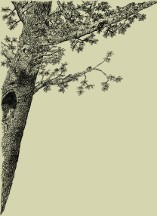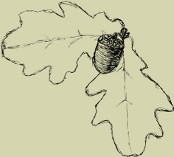42 41 40 39 38 37 36 35 34 33 32 31 30 29 28 27 26 25 24 23 22 21 20 19 18 17 16 15 14 13 12 11 10 9 8 7 6 5 4 3 2 1
Issue 36 (2005)
Wood samples collected from pines growing in excluded zones around the Chernobyl Nuclear Power Plant were investigated. It was studied whether the anatomical changes in wood structure due to irradiation might have any influence on mechanical and physical properties of investigated wood. The width of annual increments, density of wood and compression strength in longitudinal direction were analysed.
Key words: Chernobyl disaster, compression strength, density, pine wood
The impact of bending stresses on the pine wood creep in conditions of cyclic changes in the moisture content of its different stress zones was studied. Experiments were conducted at bending stresses amounting to 0.1, 0.15, 0.2, 0.25 of the mean immediate wood bending strength of 8% moisture content. Applying the same levels of stresses, wood creep at the constant low and high moisture content was also determined.
Key words: pine wood, wood bending, mechano-sorptive wood creep, asymmetric moisture content changes, linear-viscoelastic behaviour
Seven composite I-beams made of two 38 × 65 mm pine wood flanges and 10 mm thick OSB/3 web were tested in bending. The beams of an effective span of 4.5 m and height of 240 mm were loaded at third point to obtain a wide zone of pure bending. Each beam was loaded in two cycles: six times up to 6.53 kN and six times up to 10.22 kN and next until failure. The force-deflection relationship at bending of the composite I-beams appears to be linear, if the tensile stress in flanges does not exceed 130% of the computational strength of wood. The quality of the joints in the tension flange turned out to be decisive for the load-carrying capacity of the beams.
Key words: composite I-beams, oriented strand board (OSB), pine wood, bending, rigidity, load capacity, flange-web joint, failure
The paper presents the examinations concerning the effect of dimensions of a biscuit joint on the stiffness and load capacity of a corner joint in case construction. Variable factors were: the thickness of boards, the dimension and the number of biscuits in the joint. Moreover, the values of load capacity of joint were related to peak values of normal and tangential stresses in the face member of joint.
Key words: corner joint, biscuit joint, stiffness, load capacity, stresses, particleboard
The rheological properties of selected adhesion promoter have been studied. For experiment two-component waterborne adhesion promoter with the isocyanate catalyst was used. The rheological properties were determined with the use of rotary rheoviscometer equipped with system of axial cylinders. Tests were carried out in the range of shearing rate from 1.5 up to 1312.0 s−1, and measurement temperature 15-30°C.
Key words: adhesion promoter, hardener, temperature, rheological property, Ostwald de Waele’s model, viscous flow
The study investigated the effect of ethylene glycol and polyethyleneglycol PEG 300, as well as the effect of the method of their introduction to the particle and resin mixture on the properties of particleboards resinated with PMDI resin. The conducted investigations showed that PMDI resin modification with ethylene glycol or PEG 300 results in an increase in physical and mechanical properties of manufactured boards, such as internal bond, rigidity, as well as absorbability and swelling in thickness. In turn, the application of polyols onto particles in the amounts up to 0.015 moles in relation to particle dry weight results in an improvement of physical and mechanical properties of particleboards, although the introduction of polyols in the amounts exceeding this value caused a deterioration of their properties. Particleboards with the best physical and mechanical properties may be obtained thanks to the introduction to PMDI resin of polyols in the amount of 0.02 moles in relation to resin dry weight.
Key words: PMDI resin, particleboards, modification, polyols
The analysis of the concentration of the dust particles in the air cleaned by homogenous filtering unwoven fabric was done. The tests were conducted at the so-called larger scale. The results received in this way may be directly related to the condition of industrial operation of dust collectors in wood industry.
Key words: dedusting, filtration, wood dust, unwoven fabrics
Wood pellets production is characterized by high energy consumption due to the need of drying, reducing size and granulation of the material. Therefore, the energetic and ecological effects of wood pellets combustion may be even 30% lower as compared to burning wood without prior granulation. The required wood drying is a source of unnecessary losses of energy. Thus, it is questionable if incurring additional costs of pellets production may be balanced by only convenience of transport, storage and combustion.
Key words: biomass, drying, net calorific value, burning, ecological effect
The dry timber storage usually results in moisture content variation of wood before its further processing. The study presents results of numerical prediction of moisture content changes in already dried timber as induced by natural variation of ambient air parameters. The solution of the mass transfer problem was obtained for the variable boundary condition and the moisture content dependent diffusion coefficient. The validation of the modelling was made by the comparison of the results of the prediction to experimentally determined moisture content distributions of timber.
Key words: dry timber storage, Scots pine, European oak, modelling validation
The study analyses research projects realized in the field of wood science in the years 1994-2003 in Polish research centres. Priority fields and directions of future research, proposed by individual research institutions, are also listed. Moreover, needs and problems encountered by research workers are also mentioned.
Key words: wood technology, Polish research institutions, research personnel, present and future, threats and needs















 Download PDF
Download PDF